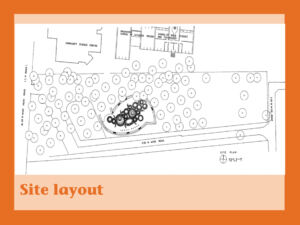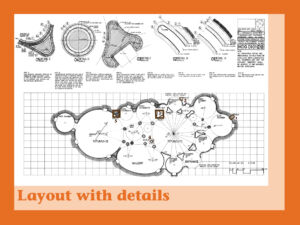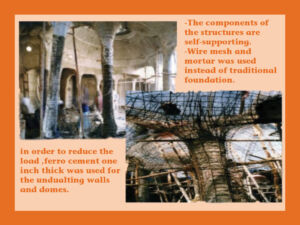Gufa – It is the result of two amazing minds .B.V.Doshi and M.F.Hussain, two friends who once planned to work together on one project. One who created the space and the other one who made it more lively by his brush strokes.The Underground Art Gallery. Here is the small case study of Gufa.
Inspiration
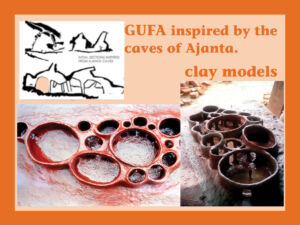
Gufa is inspired by many different things .It is known as Gufa because of its resemblance to a cave. In Gujarati,it is called Gufa. The structure is also inspired by soap bubbles and the shells of tortoises.It is also influenced by the caves of Ajanta and Ellora.
Site Layout
Plans and sectional elevations
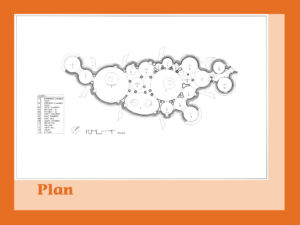
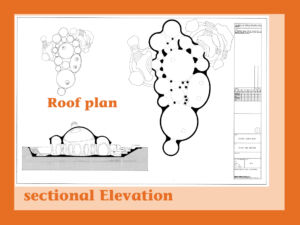
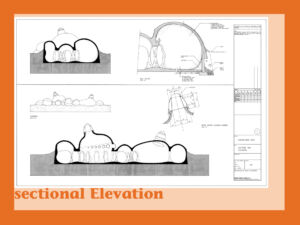
The Construction Method
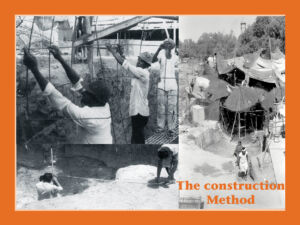
Instead of traditional foundation, the simple floor of wire mesh and mortar.Influenced by the natural caves, inclined columns are made to support the domes. Work was carried out in two phases, first was the main cave as an underground art gallery. The second phase was cave two which covers the surrounding structures including the paving, the cafe and also a separate gallery for the exhibition.The work was done by the unskilled tribal labourers,who used only hand tools.
In one of the interview by BV Doshi
While designing the gallery, Amdavad-ni-Gufa, you worked with tribals for the construction. Why?
It was a challenge for me and MF Husain to create what we didn’t know. I decided to find a magical building I had never thought of. I made a myth — if you have myth, there is magic, you get enchanted and ask why is this so. I experimented with several models, and finally decided that it had to be like soap bubbles, the volume has to be there like a basket of fruits.
If you walk inside, you get a sense of the gufa. We built a ferrocement lightweight structure, which can only be built by the tribals because it is a thin layer covering a chickenwire mesh, then clad it with China mosaic. It gave the impression of walking on the sea shore. Rounded buried shapes were available inside, the junction was supported by columns, which come in the form of forests that take varied shapes. A regular mason couldn’t have built this, so we worked with tribals.
[Doshi, interviewed by Vandana Kalra]
The inside views of the Gufa after the completion of it
The Natural lights entering B.V.Doshi‘s Gufa

Gufa is oriented North-South direction.It allows the skylights to face the south.That’s how it allows the maximum light at the peak hours.Gufa allows the natural light in it through snouts creating spots on the floor and further diffuses into the whole space.It moves around with the progress of the day.The gallery space is below the ground level.The staircase leads to the main entrance of Gufa.The protuberances act as torches at night .Daytime they reflect the light.

This is the small case study of B.V.Doshi‘s project,which i always wanted to study .I hope it is little bit informative and you can use it for the study.

